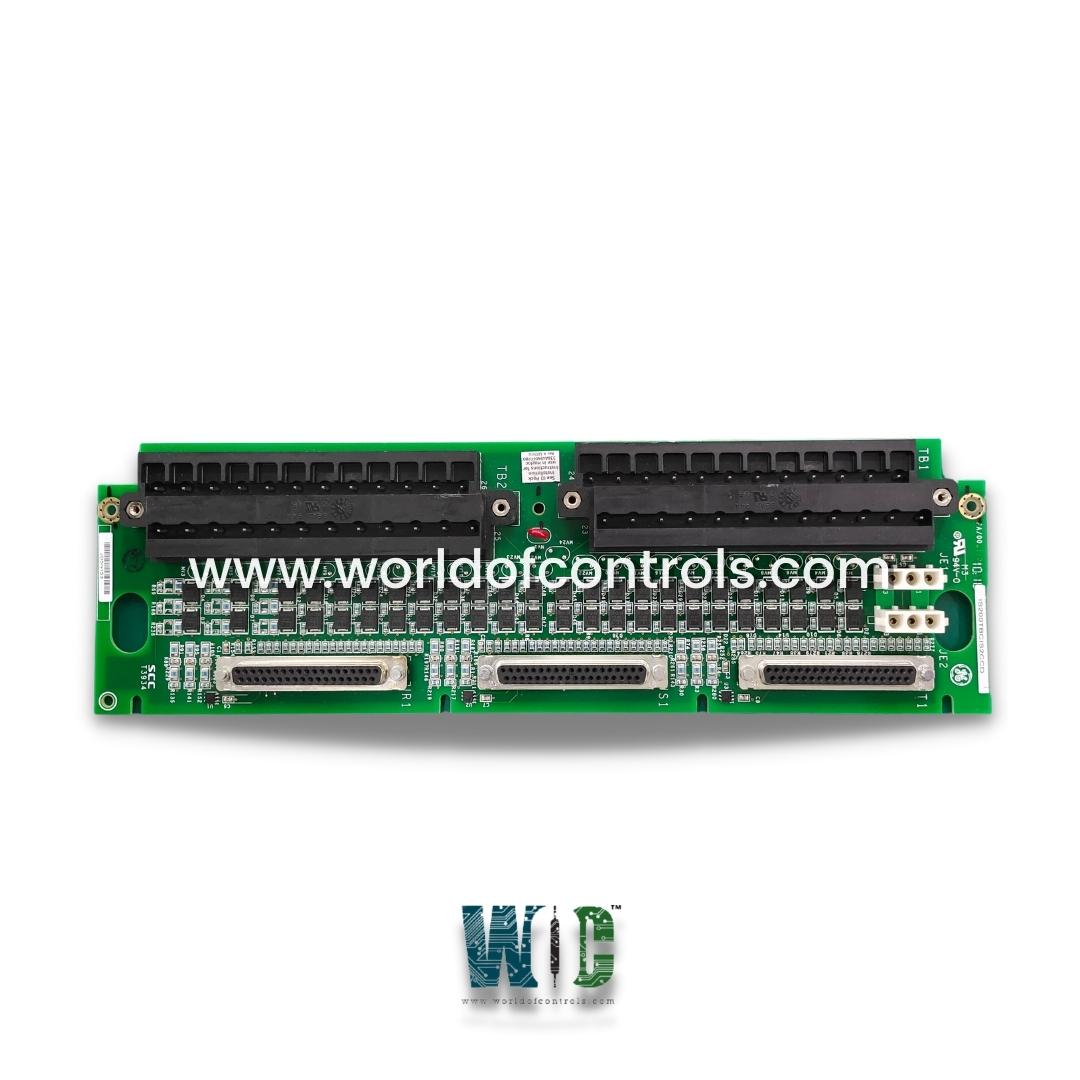
World Of Controls understands the criticality of your requirement and works towards reducing the lead time as much as possible.
IS200TBCIS3C - Contact Input with Group Isolation Board is available in stock which ships the same day.
IS200TBCIS3C - Contact Input with Group Isolation Board comes in UNUSED as well as REBUILT condition.
To avail our best deals for IS200TBCIS3C - Contact Input with Group Isolation Board, contact us and we will get back to you within 24 hours.
Part Number: IS200TBCIS3C
Manufacturer: General Electric
Series: Mark VI
Product Type: Contact Input w/ Group Isolation Terminal Board
Input filter: Hardware filter, 4 ms
Power consumption: 20.6 watts on the terminal board
Size: 33.02 cm high x 10.16 cm wide
Temperature Operating: -30 to 65oC
Number of channels 24
Availability: In Stock
Country of Manufacturer: United States
IS200TBCIS3C is a Contact Input with a Group Isolation Terminal Board developed by General Electrics. It is designed to handle operational tasks; it effectively accommodates up to twenty-four dry contact inputs, which are connected through two barrier-type terminal blocks. This model demonstrates versatility in its applicability, catering to a range of control systems.
In a simplex system configuration, a single connector JR1 is employed. This connector serves as the interface for connecting cables or I/O packs to the Mark VI or Mark VIe system. The specific type and number of cables or I/O packs depend on the system's requirements and the application.
In contrast to the simplex setup, a TMR system utilizes all three connectors available. This redundancy scheme is employed to enhance system reliability by providing backup components. In such a configuration, all three connectors are used to connect various cables and I/O packs.
Cables and I/O packs are essential components of the system, and their usage depends on the specific Mark VI or Mark VIe system and the chosen level of redundancy. These components facilitate the transfer of data and signals within the system, ensuring proper functionality and communication.
For a Mark VIe system, the I/O packs are connected to a specific component called the TBCI (Terminal Base Connector Interface). These packs are attached to side-mounting brackets, providing a secure and organized installation. One or two Ethernet cables are typically plugged into the I/O pack to establish network connectivity. In some cases, firmware updates or downloads may be necessary to ensure the I/O pack's compatibility and functionality within the system.
WOC has the largest stock of Speedtronic control spares. Please contact our staff by phone or email for pricing and availability on any parts and repairs
What is IS200TBCIS3C?
It is a Contact Input with a Group Isolation Terminal Board developed by General Electrics.
What is the significance of the coded information in the read-only chip?
The coded information in the read-only chip includes crucial details like the board's serial number, type, revision number, and the specific JR1/JS1/JT1 connector location. This information is used to validate the board's compatibility and ensure proper functioning within the system.
What happens if a mismatch is detected during the chip reading process?
If a mismatch is identified between the information read from the chip and the expected parameters, a hardware incompatibility fault is triggered. This fault alerts users to a potential mismatch between the connector and the connected board, ensuring that incompatible components are not used together.
How does the hardware incompatibility fault benefit system operations?
The hardware incompatibility fault plays a crucial role in maintaining system integrity. It prevents the use of components that are not properly matched or configured, reducing the risk of errors, malfunctions, or data inaccuracies within the system.